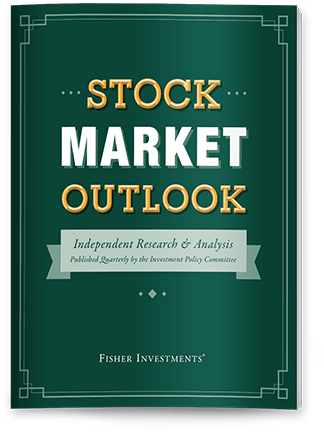Personal Wealth Management / Politics
Take It Easy, GENIUS
Parsing what the GENIUS Act means for US markets.
Editors’ note: MarketMinder is nonpartisan, favoring no party nor any politician, and assesses political developments solely for their potential effects on the economy, markets and personal finances.
President Donald Trump signed the first federal bill to regulate stablecoins last Friday: the Guiding and Establishing National Innovation for US Stablecoins (GENIUS) Act. As crypto proponents cheered the news, others warned of potential risks to the financial system. New legislation always has the potential to create unintended consequences, but the current stablecoin landscape suggests the broader implications look limited right now.
For a refresher, stablecoins are cryptocurrencies that seek to maintain a fixed value. Their appeal is tied to blockchain technology (as a way to buy other crypto assets), as well as providing a supposedly “safer” route to decentralized finance. Stablecoins are usually pegged to a traditional currency like the US dollar. Issuers theoretically maintain this peg by holding reserve assets (e.g., short-term government debt and/or cash equivalents), but it is questionable whether all stablecoins do this. That has created problems in the past—see TerraUSD’s high-profile collapse in 2022—leading to one of the main provisions in the bill.
The GENIUS Act aims to set standards and rules for stablecoin issuers, including formal reserve requirements. (Exhibit 1) Proponents cheered the legislation, seeing this as the first step to broader acceptance for crypto as a medium of exchange. But skeptics fretted over potential risks, including downstream effects on the Treasury market.
Exhibit 1: Some GENIUS Takeaways

Source: The White House and Fisher Investments Research, as of 7/18/2025.
The GENIUS Act doesn’t change our views about crypto as an investment—we aren’t inherently against them, but to us, they are mostly speculative assets subject to extreme bouts of volatility. Stablecoins may be less bouncy in theory, but they aren’t infallible and really aren’t investments per se—but payment vehicles. One reason for the reserve requirement is that many coins purportedly keep their reserves in other cryptos like bitcoin. Some theorize reserve requirements will reduce demand for bitcoin or other cryptos, lowering their price—possible, though tough to verify given the crypto space’s opacity. More broadly, the alleged financial system risks look overstated. Let us explore.
Consider the alleged risks for the Treasury market, where stablecoin issuers have become a big source of demand. For example, the biggest stablecoin issuer, Tether, purchased $33 billion in US Treasurys last year and now owns more than Germany.[i] What if there is a run on a stablecoin and the issuer needs to sell assets quickly—thereby triggering a vicious cycle of forced selling and falling Treasury prices? Some fear this could recreate a selloff in government bonds akin to the UK’s margin call-induced panic many (wrongly) pin on former Prime Minster Liz Truss.
One, stablecoins are far from the only source of Treasury demand. The $6 trillion Treasury bill market has plenty of buyers, from the $7.5 trillion US money market fund industry to international buyers and businesses.[ii] Two, this concern isn’t new. A decade ago, some worried bond exchange traded funds (ETFs) would worsen bond market liquidity. ETFs are liquid and easy to trade, but their underlying components (bonds) are less so—and during periods of heavy selling, this “mismatch” could force investors to accept significantly lower prices. Yet that fear was overblown, as short-term bond market volatility hasn’t scared off buyers. The 2023 US regional bank crisis stirred similar concerns, when Silicon Valley Bank (SVB) sold off its Treasury holdings at a loss because it needed capital. But SVB and a handful of other cases aside, the US banking system and Financials globally held up fine, and there was no Treasury selling spiral.
What about the concern that stablecoins will replace existing payment systems? That possibility could have longer-term implications for the finance industry, but don’t overlook the lack of incentives for consumers or businesses today. To buy anything using a stablecoin (or other crypto), consumers need to set up a crypto wallet, learn how the system works and find places that would accept their coins. Why do all that when you can pay with cash, a credit card (and earn some rewards or cash back) or any of many digital options?
The GENIUS Act also didn’t change anything about the IRS’s tax treatment of digital assets, which are considered property, not currency. According to the IRS, if you “disposed, sold, exchanged or transferred ownership of digital assets … in exchange or trade for property, goods or services in any amount,” that would count as a taxable event—making it subject to capital gains taxes.[iii] In practice, if you bought a cheeseburger using Tether, you would have to account for capital gains taxes, too—which could make most purchases prohibitive. You might not think that is an issue given stablecoins’ purpose and design, but these coins have broken their pegs before. During the aforementioned TerraUSD’s 2022 collapse, Tether fell below its $1 peg to as low as 95 cents.[iv] That makes it a somewhat shaky medium of exchange—not to mention the hassle associated with documentation and/or reporting requirements.
For now, stablecoins’ main use is tied to crypto—they aid with trading coins, serving as a source of collateral or idling as cash on platforms. Think of them as scrip people use to buy speculative coins. That said, we are keeping an eye on stablecoins’ potential dissemination to the real world. How will integration develop within the banking system? Rather than stablecoin issuers replacing traditional lenders, banks could end up using blockchain technology or issue their own stablecoins to function as commercial bank deposits. A digital currency could also help banks complete routine transactions, including cross-border payments and faster transaction settlement for institutional clients. The same goes with existing payment systems companies.
We are also monitoring other pieces of crypto legislation coming down the pike. The CLARITY Act—which is now with the Senate after passing the House—would give most jurisdiction of crypto oversight to the Commodity Futures Trading Commission, removing some (but not all) oversight powers from the Securities and Exchange Commission. GOP lawmakers have pushed for a ban on any central bank digital currency (CBDC), which doesn’t even exist today. But a “Fedcoin,” should it eventually exist, is being studied for purposes of cross-border payments, money transfers and settlement—which might make privately issued stablecoins redundant.
New laws create winners and losers and carry unintended consequences, so we are studying these changes as they come through. For now, don’t overstate crypto’s latest developments. While they grab attention, the implications for the broader economy or markets aren’t as large as they seem.
H/T: Fisher Investments Research Analysts Davis Zhao, Michael Ackerman and Ben Lederer
[i] “Regulating Stablecoins Will Take a Genius Act, and This Isn’t It,” Allison Schrager, Bloomberg, 7/18/2025.
[ii] Source: Fisher Investments Research, as of 7/10/2025.
[iii] Source: IRS, as of 7/20/2025.
[iv] “The World’s Biggest Stablecoin Has Dropped Below its $1 Peg,” Ryan Browne, CNBC, 5/13/2022.
If you would like to contact the editors responsible for this article, please message MarketMinder directly.
*The content contained in this article represents only the opinions and viewpoints of the Fisher Investments editorial staff.
Get a weekly roundup of our market insights
Sign up for our weekly e-mail newsletter.

You Imagine Your Future. We Help You Get There.
Are you ready to start your journey to a better financial future?

Where Might the Market Go Next?
Confidently tackle the market’s ups and downs with independent research and analysis that tells you where we think stocks are headed—and why.





